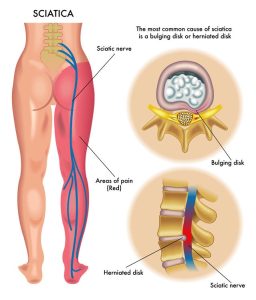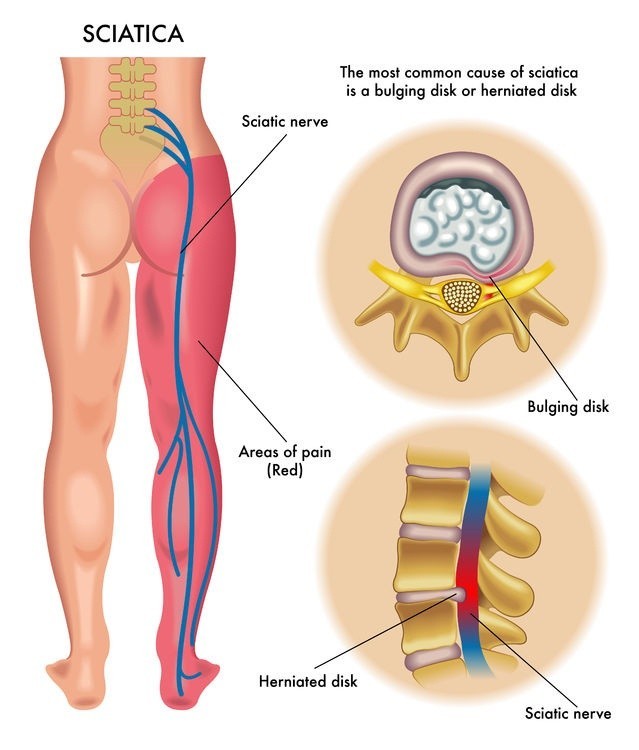You’ve heard about Sciatica, or may have experienced it, but what exactly is it?
First thing to know is that sciatica is not a diagnosis. It describes a group of symptoms that either involve the sciatic nerve as it leaves your lumbar spine, or present a very similar pattern.
 Symptoms often labelled as “Sciatica” are:
Symptoms often labelled as “Sciatica” are:
– Pain starting in the lower back or buttock that can radiate to sharp/shooting pain in the back of the leg. This commonly occurs below the knee to the calf and even the foot.
– Altered sensation such as numbness, tingling, pins and needles or burning down the back of the leg and into the calf or foot
– Weakness in the muscles of the leg or foot
– Pain is worsened from movements and positions involving your back, hips or legs, such as walking or sitting. Consequently, this makes it difficult to find relief.
It is important to understand that a true compression of the sciatic nerve occurs as it leaves the spinal cord. There are multiple conditions that can feel very similar but are not the same. Therefore pinpointing what is producing your pain may be difficult.
Lumbar spine related causes:
- a bulging or herniated spinal disc compressing the nerve
- narrowing of the space surrounding the spinal cord, called spinal stenosis
- scar tissue or bone spurs near enough to compress the nerves

Other conditions that feel similar:
- Piriformis Syndrome – irritation of the sciatic nerve caused by a muscle deep in your buttocks that controls rotation and stability at your hips.
- Sacroiliac joint dysfunction – when the joint that connects your spine to your pelvis produces pain due to compression or non-optimal movement. This pain can radiate into the back, buttock, hip and down the thigh.
- Pain from an irritated joint (ex arthritis) or muscle in the back or hips. This can refer pain into the buttock or down the thigh.
So how can we tell these things apart?
Your treating physiotherapist will ask questions about the onset, location and quality of the pain to get a better clinical picture of the suspected cause. They will then go through several special tests that involve moving your back , legs and hips. This may change your pain symptoms in order to rule in/out the most likely source. Once there is a most likely cause, your physiotherapist can begin appropriate treatment.
If you think you might suffer from symptoms similar to what we’ve described, BOOK IN with one of physiotherapists today.

